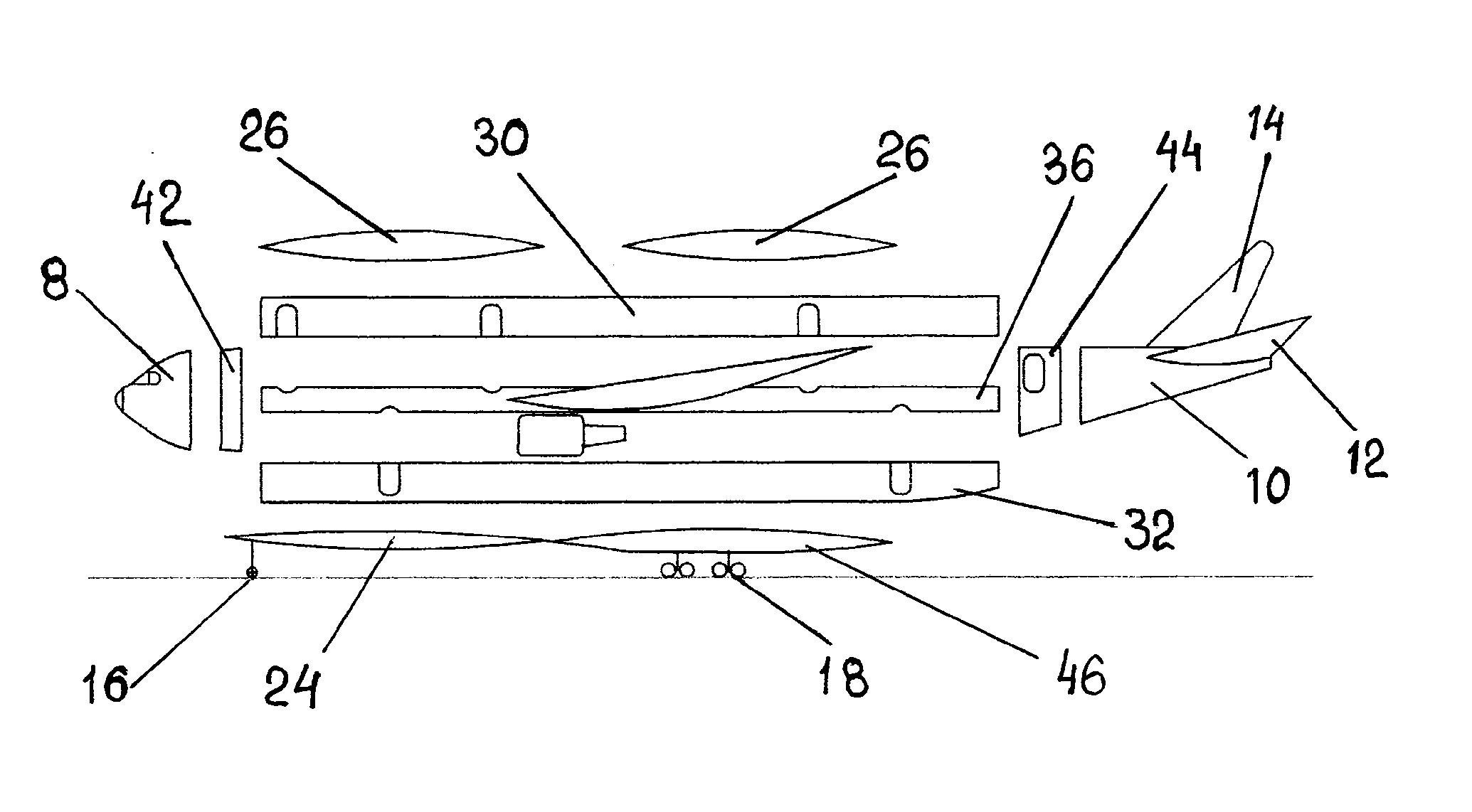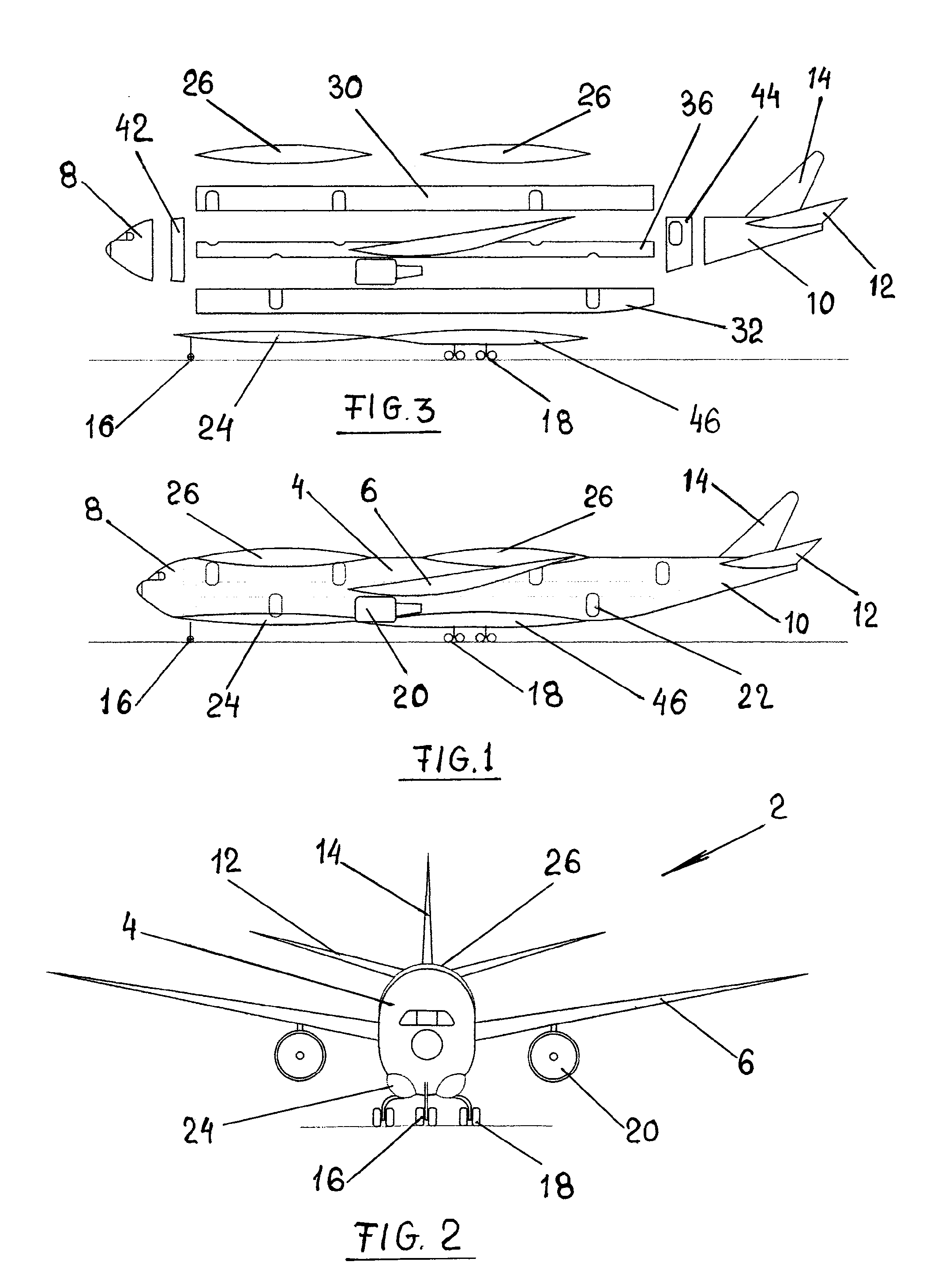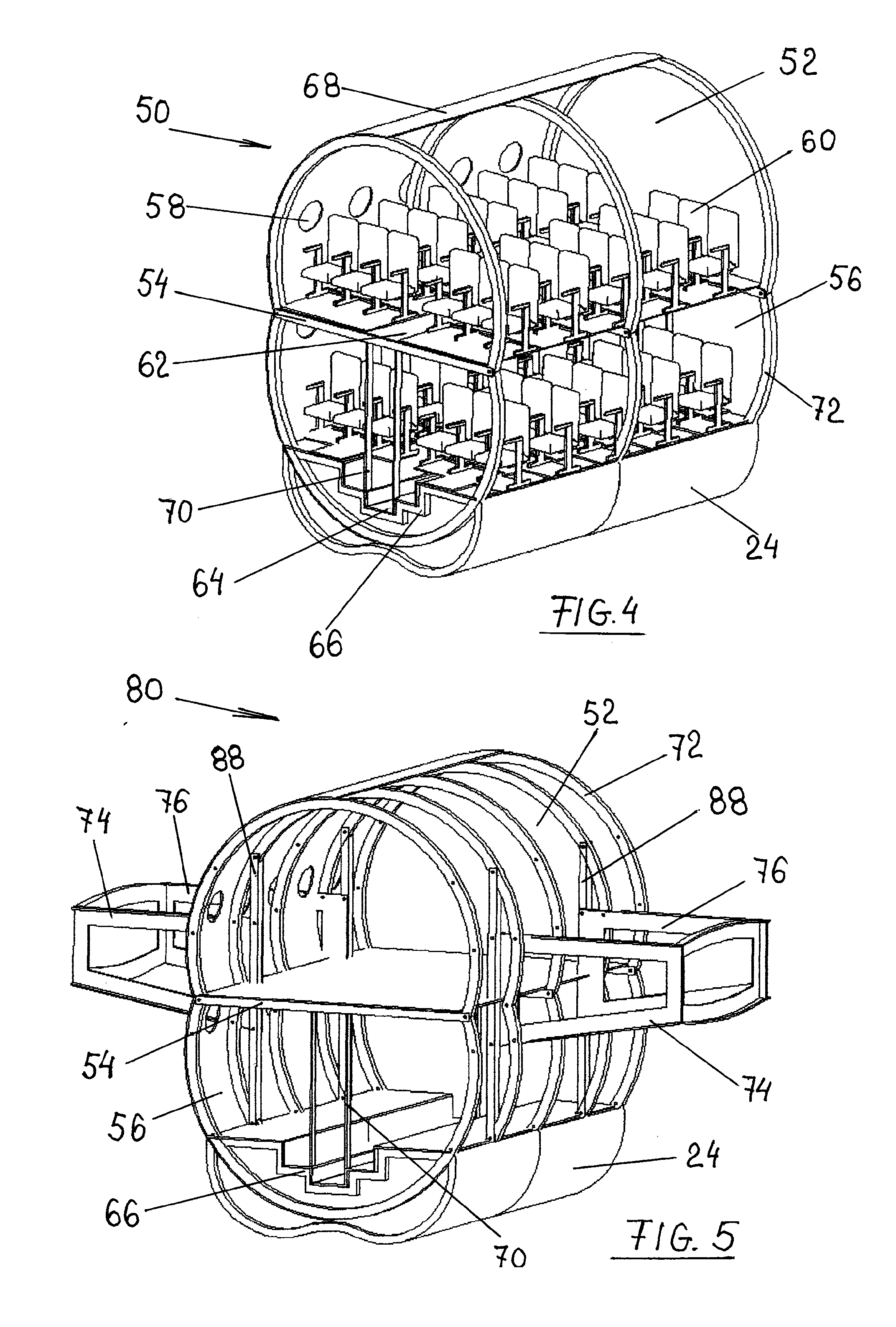Multi deck aircraft
a multi-deck aircraft and fuselage shell technology, applied in aircraft floors, wing adjustments, air transportation, etc., can solve the problems of reducing the space beneath the lower deck, reducing the efficiency of multi-deck aircraft, and reducing the thickness weight, so as to maximize the freedom of passenger movement, increase the efficiency of multi-lobe aircraft, and minimize the thickness and weight of the fuselage shell.
- Summary
- Abstract
- Description
- Claims
- Application Information
AI Technical Summary
Benefits of technology
Problems solved by technology
Method used
Image
Examples
Embodiment Construction
[0044]FIGS. 1 and 2 show side and front view of derivative twin deck aircraft 2. Aircraft 2 includes oval fuselage 4, wing 6, nose portion 8, tail portion 10 with horizontal 12 and vertical 14 stabilizers, forward landing gear 16, main landing gear 18 and turbofan engines 20 attached to the wing 6. Entrance and exit doors 22 and windows attached after redesign and assembling fuselage. Energy absorbing external cargo containers 24 attached to aircraft belly and external fuel tanks 26 positioned on a top of the fuselage 4, providing streamlined outer surface and increasing area-ruling drag reduction effect. The interchangeably external cargo containers 24 and auxiliary fuel tanks 26 have similar devices for connection with fuselage structure. The main landing gear 18 retracts in landing gear bays 46, shaped to have a streamlined outer contour with external containers 24. Detailed descriptions about passenger cabins show in FIGS. 4 and 8.
[0045]FIG. 3 shows exploded view of the method f...
PUM
 Login to View More
Login to View More Abstract
Description
Claims
Application Information
 Login to View More
Login to View More - R&D
- Intellectual Property
- Life Sciences
- Materials
- Tech Scout
- Unparalleled Data Quality
- Higher Quality Content
- 60% Fewer Hallucinations
Browse by: Latest US Patents, China's latest patents, Technical Efficacy Thesaurus, Application Domain, Technology Topic, Popular Technical Reports.
© 2025 PatSnap. All rights reserved.Legal|Privacy policy|Modern Slavery Act Transparency Statement|Sitemap|About US| Contact US: help@patsnap.com



